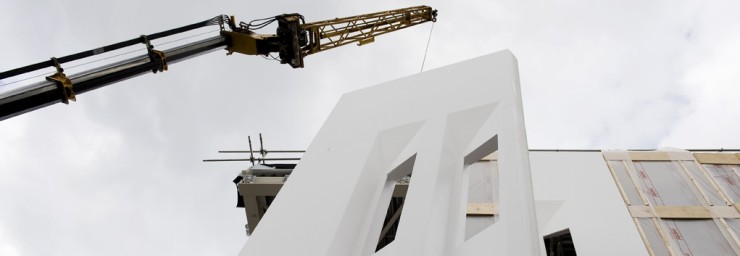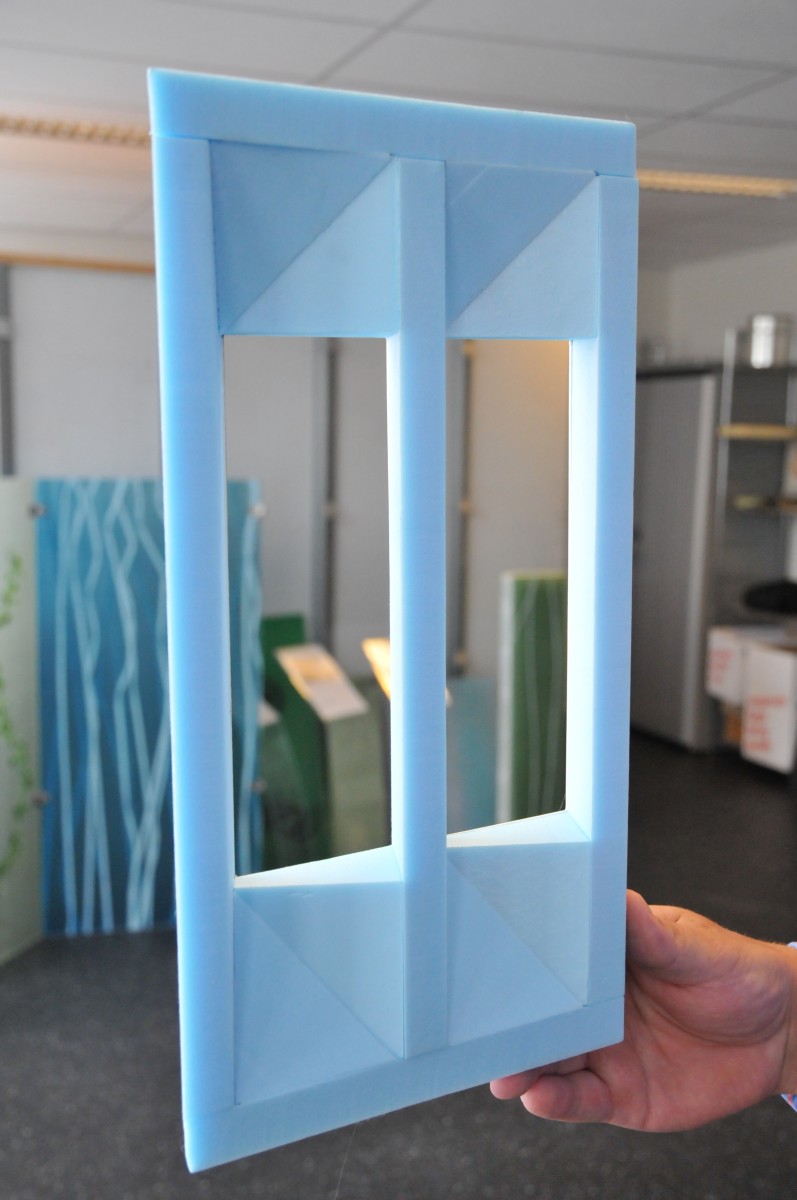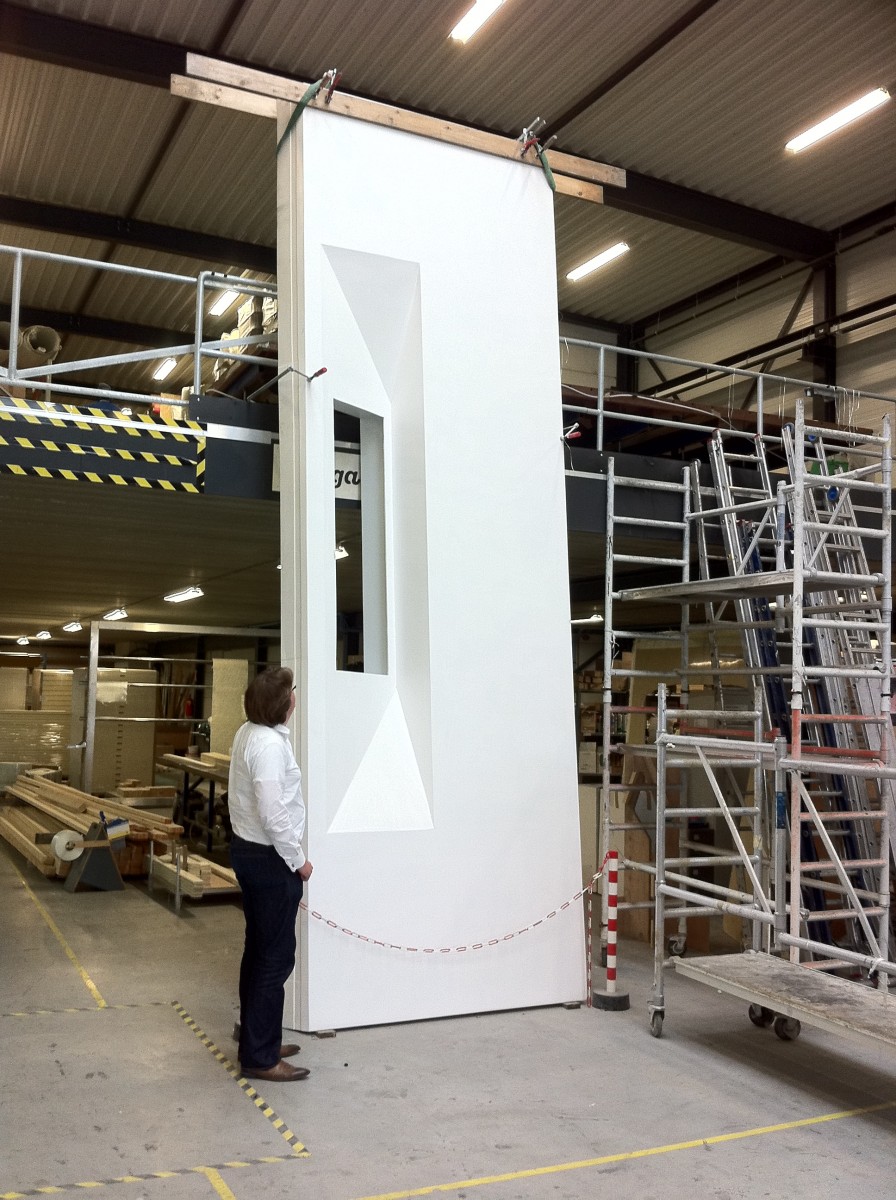Part 3. Enexis regional offices: in search of an intelligent facade
In search of renewable raw materials
Clearly, the scope of the subcontracting industry is shifting towards total use of bio-based raw materials. This became obvious when during the seven month research route, the percentage of biological components in available resins increased from 10 % to about 65 %. Apart from all the unclear facts concerning their application (guarantee, ageing process, processability, etc.), it was technically possible to produce a composite material layer that consisted of renewable raw materials for about 90 %. Originally, these furane resins were used in the sugarcane industry and during the tests they appeared to have a number of special processing conditions. For instance, they appeared to be more viscous than was advisable for vacuum injection. In addition, the ‘open time’ was shorter than in the case of chemically based resins: thus the work had to be done faster and there was less opportunity to inject over greater lengths and volumes.
The original ideal image had been a white outside surface, in which a non-woven flax reinforcement would be visible, providing a refined subtle texture. However, this construction is less suitable for exterior applications, as transparent resin is less resistant to UV radiation. Replacement by a bio-based variant was not an obvious solution either, as this has a brownish rather than whitish colour. In the end, we decided not to use such a construction.
When the choice had to be made, epoxy resin proved to offer the best guarantee for a good final result. There was simply not enough time (and budget) to thoroughly investigate any further bio-based alternatives; an issue to which atelier PRO certainly will devote itself in future projects.
For the exterior, protecting finishing, a product based on petroleum is still needed to guarantee an acceptable level of protection; a proper biological alternative is not yet available.
Critical comment on BREEAM-NL criteria
Atelier PRO was really surprised about one aspect of BREEAM-NL’s assessment criteria; it appeared that in the case of Enexis they hardly took into account the high green level in use of materials. This was apparent from the fact that solar cells were applied to make the buildings energy-neutral, and these contain a relatively high amount of polluting building materials. So in this case, the application of ‘green’ materials in the facade does not compensate for the number of solar cells that have been used. In doing so, a major incentive towards customers remains unused, and thus, in our opinion, material innovations are insufficiently stimulated. Nevertheless, the search for a durable facade finishing was rewarded thanks to the application of LCA (Life Cycle Assessment) analyses in the BREEAM-NL certificate. This also made the choice whether to use bio-based materials or not, much easier. By quantifying the various alternatives, a choice has been made based on the criteria of sustainability, investment costs and maintenance costs. In the end, the choice was made for a facade that provided a twice as high performance, compared to a referential brick facade.
Read also the blogs part1 and part 2.
More project information regional offices Venlo, Maastricht and Zwolle.
Watch here a video about the assembly of the facade.
Montage facade Regional Office Enexis atelier PRO from atelier PRO on Vimeo.






